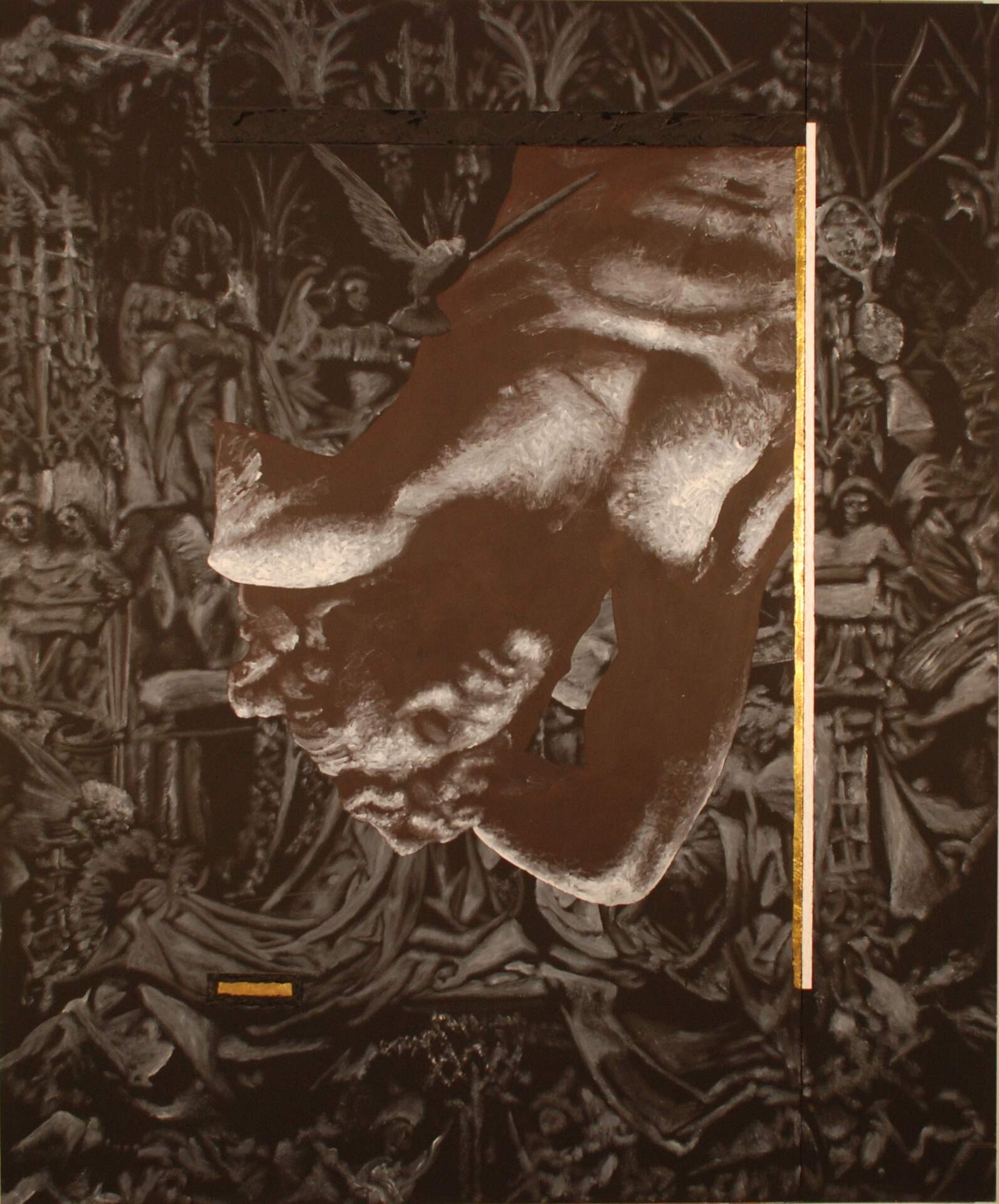Peter D. Stephens (b. 1958)Dove and Faun
1986
oil, enamel and gold on wood
72 x 60 inches
Gift of Mr. & Mrs. Robert L. Freudenheim, 1986
In the center, Peter Stephens inverted imagery of the Hellenistic marble sculpture known as the Barberini Faun (3rd century BCE), copied from a reproduction in H. W. Janson’s History of Art. Stephens, like many students, were introduced to art through these black and white plates, only to be astonished by how poorly they conveyed the impact of seeing the original. The Roman faun, or Greek satyr, was a male creature with human-like characteristics and goat-like features including hooved feet, a tail, large pointed ears, and horns. The Barberini Faun, however, is entirely human—an erotically posed, sleeping or resting male that represented the ancient Greek idealized body. (Cardinal Francesco Barberini acquired the sculpture for his collection in the 17th century after it had been excavated in Rome through the sponsorship of his uncle, Pope Urban III.) A dove hovers over the inverted faun, having seemingly flown from the Gothic cathedral background. Contemporary framing, in the form of gold, white and black impasto-drawn lines, further insert Stephens’ deconstruction and collage of elements as a multi-layered, fragmented collection of personal memories that convey artmaking over the span of millennia.
—Nancy Weekly
